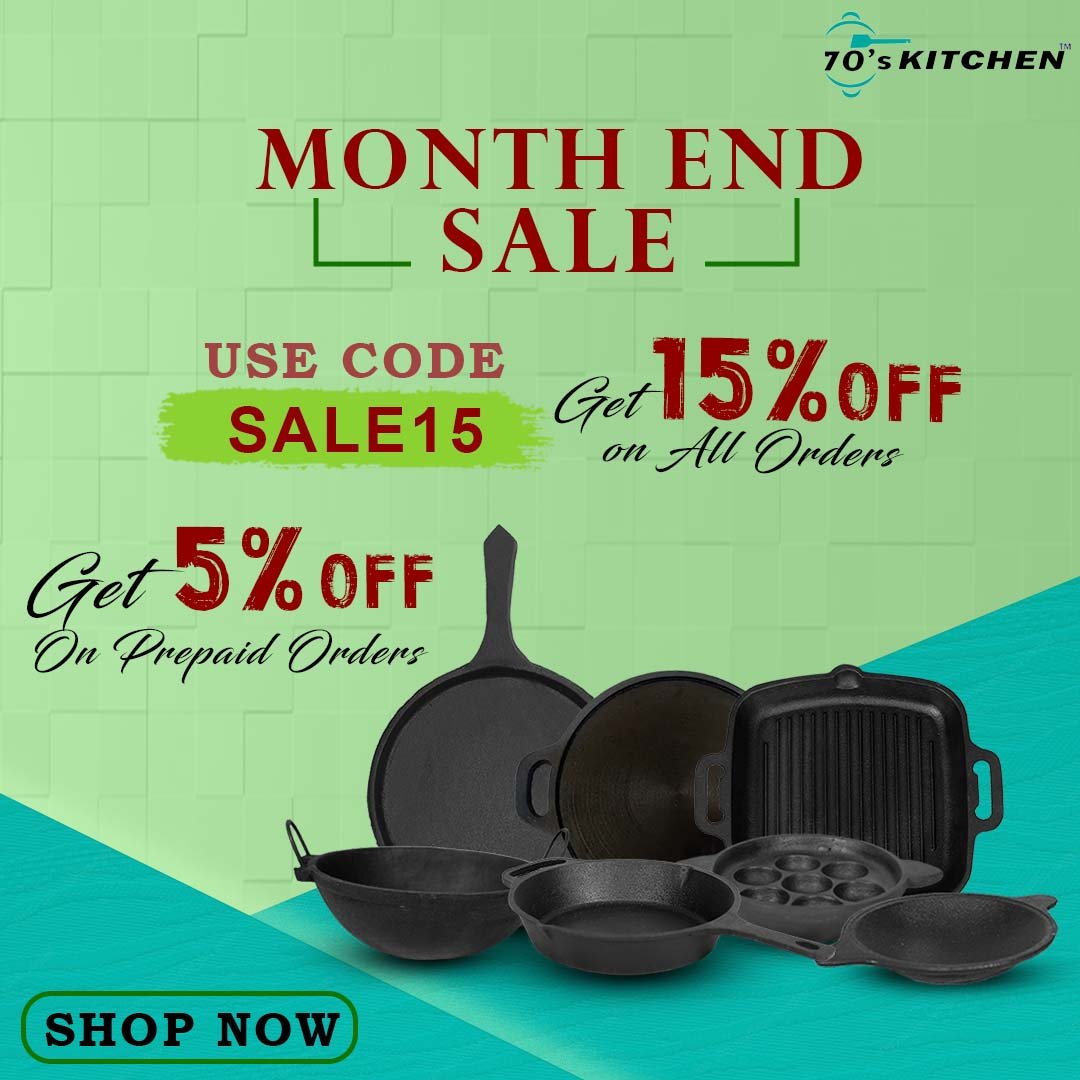Cast Iron Cookware Uses
Though it’s quite easy to forget about our old friend, the cast iron pan, in this age of non-stick. But truly these pans are worth investing in if you really want perfectly grilled steaks and veggies, or if you want to add char to your wraps.
So let us assume that you either have or you are about to buy a new cast iron cookware, then there are few set or rather “written-in-stone” rules you NEED to remember.
It’s commonly said that cast iron is difficult to maintain except for those who are used to it but is that myth really true ?
No need to worry, it’s not true at all !
Cast Iron Pan will do wonders with proper care and maintenance. It would even survive disasters with proper ‘seasoning’. For first time users who have no idea about what is seasoning,
We’ll tell you about how you can season your cast iron cookware, which oils to use and how to care for it or spruce up an old one so it will last for generations. Trust us, Regular seasoning will protect the pan from rust and it also gives durability.
Seasoning
Nowadays, if you buy a cast iron pan, it is almost pre-seasoned. This is beneficial to you because all you have to do now is look after it .
Listen up, however, if you’re trying to give an old or rusted cookware new life. You’ll need to season the pan first. That is to say, you are going to add few more layers to protect and make the cookware rust free
What is the right way to season a cast iron pan?
- Clean some dirty or oily spots first. Scrub the pan with a scrubbing brush, making sure to remove all of the stains . This is the final time you’ll rinse your pan with soap and a scrubbing brush or sponge, so do it properly.
- Preheat your oven to 180°C
- Rinse and thoroughly dry the plate. Wipe a thin film of oil over the interior of the pan with a brush or a wadded paper towel. You may use any oil, but one with a high smoke point is preferred because this oil can act as the base for your seasoning layer, and cast iron gets extremely hot.
- Place the pan upside down on an oven or a stove
- On a stove, turn off the heat and allow the pan, as well as the oven, to cool to room temperature. You should perform this step as many times as you want because each coating adds to the pan’s non-stick layer. You can even do it only once and let it rest for a bit.
- Vegetable oils (Peanut oil, Coconut oil, Almond oil & flaxseed oil) can be used to season the cast iron cookware !

The Care
If you love your cast iron cookware, then the main thing that you need to do is look after it. How ? Always clean after you finish cooking, simple.
- Never put a hot cast iron cookware into cold water. It’s not worth it to risk it being cracked by thermal shock.
- Cook your food according to the instructions above, then remove from the heat and set aside to cool.
- Take food pieces from the cold pan if they’ve stuck to the top. Instead of using a scrubbing brush, use a mix of rough salt and a cloth to get the grease and stains off.
- This is incase if the above point happens, then it’s an indication that your skillet is not seasoned enough and you need to re-season it again.
- So, before using the pan for cooking, you may want to do the seasoning phase in the oven or stove again and repeat it a few times.
- So No sticky Food? Victory! Now, to remove any remaining oil, put the pan under cold water (no need to use soap) and wash it out with a wet cloth.
- Allow it to drain, then completely dry it before storing it back in the cupboard.
With a few basic techniques, you can sear beef, crisp chicken skin, griddle carrots, and bake skillet brownies like a pro. It’s one of those pans you’ll hand on to your children, along with the recipes you’ve tried. Yeah, some kitchen equipment takes some time to get to know, but much like humans, those who take the time to get to know each other form the strongest friendships.




